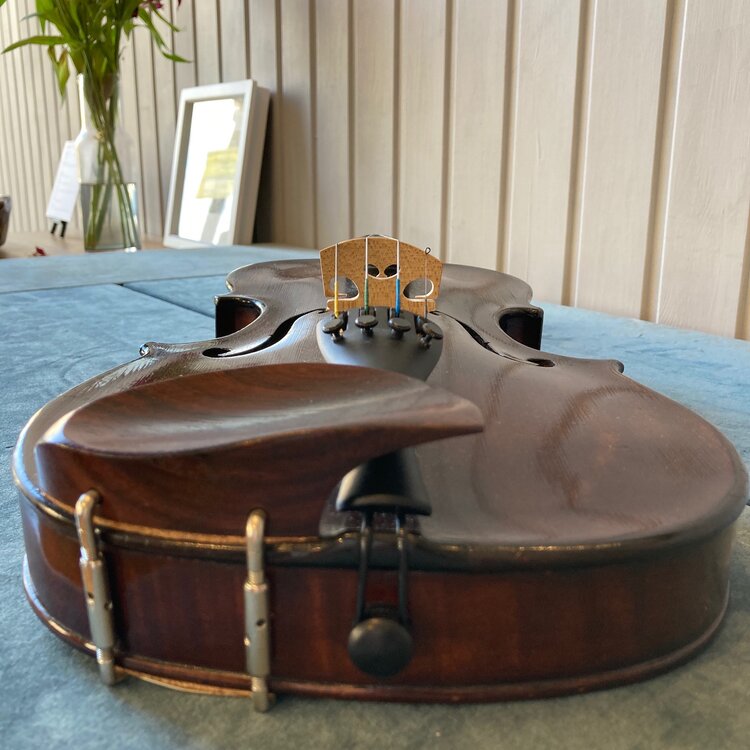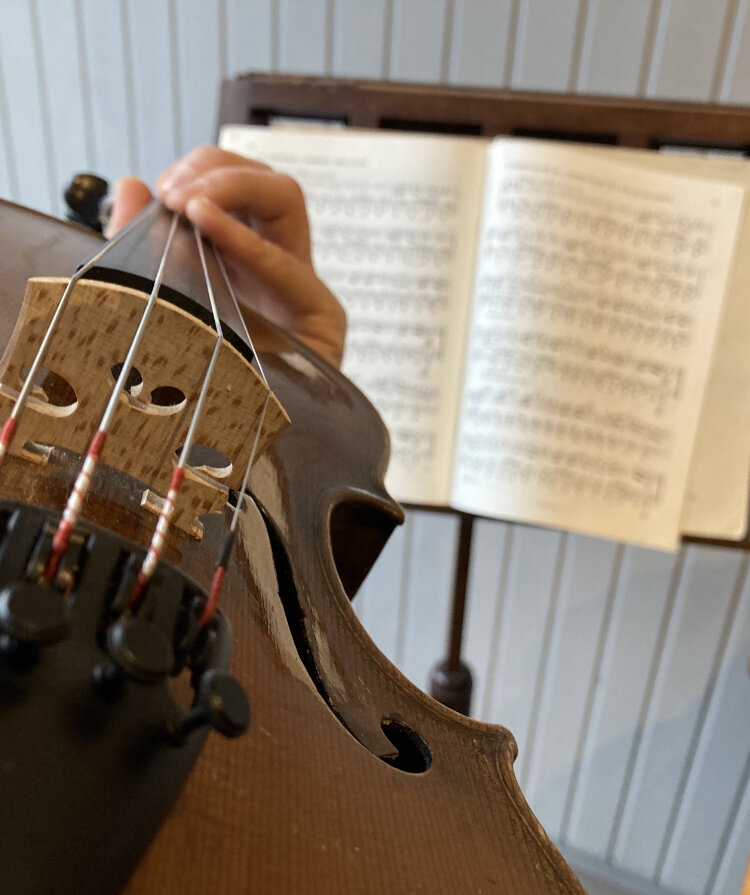One of the questions we are asked most often is how to clean a string instrument. We have put together a little guide below: if you have any questions, feel free to put them in the comments or to send us an email.
1. How to clean a violin, viola or cello
First of all, remember that it’s better never to have to do a big clean on your instrument – washing your hands before you play will go a long way towards making sure it stays nice and clean. Another good idea is to give it a quick wipe with a clean, dry cloth before putting it back in the case. Over time, however, a build-up of rosin and the impact of heavy practice (we’re assuming the best here!) means that your instrument might benefit from a gentle clean.
The best way to do this is to clean your violin carefully with a dry, lint-free cloth. For particularly stubborn marks, lightly dampening the cloth with water or perhaps even a tiny bit of salvia are your best options. Clean carefully, making sure to check for any varnish colour coming off on the cloth: stop immediately if you see this! New student instruments tend to have a very thick layer of varnish which will not budge when cleaning and so these can take a little more vigour as you go. A great design feature really given these are often the instruments that need the most help!
Some instruments have particularly soft varnish which is much more vulnerable to cleaning: you will probably be aware if this the case for your instrument as the varnish will tend to be more prone to dents, scratches, and chips. The most extreme versions of soft varnish can seem to gather dirt, creating a slightly gummy top layer of a darker colour in places. Instruments with especially soft varnish are best left to the luthiers, as of course are instruments of high value. Never use polish or any other chemical on your instrument: this is another job very much best left to the luthiers.
2. How to clean rosin from strings
Over time, the rosin from your bow will build up on the strings, preventing them from resonating properly. Another way to tell if it’s time to get cleaning is if a white film is visible on the strings. Just like cleaning the instrument, rosin can also be cleaned off with a soft, dry cloth – doing this is one of my least favourite jobs in the shop as it often produces a particularly unpleasant screeching sound! Try it, you’ll see what I mean… Using alcohol or any other chemical on your strings is not recommended, even when they are off the instrument.
Rosin can also build up on the underside of your bow, leaving a sticky white residue. If this is bothering you it can also be cleaned off with a soft, dry cloth.
3. How to clean a violin or viola chinrest
The chinrest is a part of the instrument that is often neglected in a cleaning regimen; however, it can become quite dirty over time. As it touches your face, it is important to keep the chinrest clean by giving it a quick rub with a clean cloth after each time you play. Getting into the habit of wiping your chinrest and strings before putting the instrument in its case will help to ensure your strings last longer and that your chinrest remains clean.
If you feel that the chinrest requires a more thorough clean, we recommend removing it from the instrument before giving it a clean with a cloth dampened with a little hot, soapy water. Dry it, leave it until the cork on the underside is completely dry and then check very carefully for any remaining moisture before reattaching the chinrest to your instrument.
As a side note, keeping the chinrest clean may help to avoid the painful red mark which often graces the necks of violinists and violists. Covering the chinrest with a cloth, trying a chinrest with a different fit, changing to a chinrest of a different material, or swapping to one with titanium barrels are also all worth trying if this issue is causing irritation.

4. How to clean a violin fingerboard
The fingerboard of your instrument is another area where grime can build up over time. The strings usually get in the way of cleaning the fingerboard thoroughly, however, these can be carefully tucked aside to give it a good scrub with a clean, dry cloth. Take one string at a time, slightly loosen the tension using the peg and then shift the loosened string over to rest on top of one of its neighbours. Clean the exposed area of the fingerboard, tune up the string and then repeat with the other three strings. As tempting as it would be to loosen all four at once, taking the tension off the strings one by one ensures that the other strings keep the bridge and soundpost in place.
On student instruments, old stickers often leave a gummy residue on the fingerboard: this can be removed with a very small amount of adhesive cleaner, applied with great care so as not to get any on the body of the violin. This is an approach I would recommend only for contemporary student instruments – as always, a more valuable instrument should only go near cleaning chemicals inside a luthier’s workshop.

5. Alcohol hand gel and string instruments
We’ve seen a few instruments which have come into contact with hand gel in recent months. Whilst good hygiene is paramount just now, the alcohol in hand sanitiser is very damaging to varnish and needs to be kept far away from your instrument. Alcohol tends to evaporate very quickly: our best advice is to choose a hand sanitiser that dries quickly on your hands and to make sure that this happens before you touch the instrument. Always make sure that you don’t apply the hand gel anywhere near your instrument to avoid accidental drips! Aftershave and perfume also contain alcohol: make sure that this is dry before picking up your instrument to play.
Of all of the tips above, remembering to give your instrument and strings a quick wipe before putting it back into the case is by far the most important. Doing this every time will help to keep the big cleaning jobs to a minimum! If in doubt, err on the side of caution with cleaning string instruments: check with a local luthier or
send us a message!
We hope that this blog post on cleaning your instrument and bow has been helpful. Do check out our other posts!